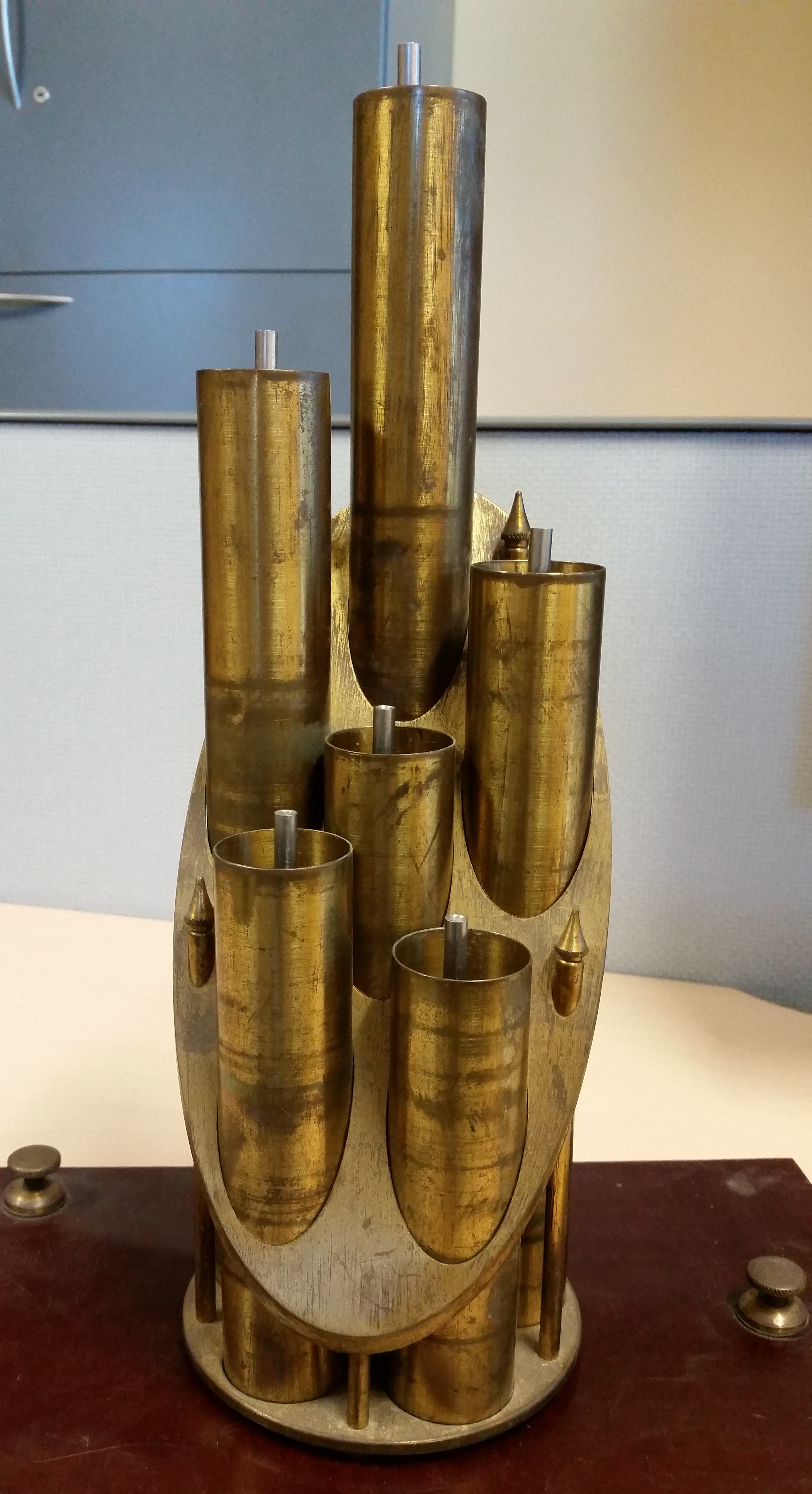
The falling pin seismograph was developed in 1927 for quarry operators by Edward Rockwell of the Rutgers University. Seismographs were not very portable at that time - and quarry operators needed some type of system to monitor the vibrations from their blasting activity.
The falling pin seismograph consists a level base on which a number of pins, typically 1/4 inch in diameter, ranging in length from 6 to 15 inches are placed upright. The pins stand inside hollow tubes so that each pin can fall independently. The longer the pin, the less energy required to topple it.
In practice it has been accepted that if the shorter pins remain standing, then there is no possibility of structural damage to a building by a quarry blast. A typical rule of thumb in the industry is that velocities of less than 2 inches/sec will not cause damage to structures, which correponds to 3 inches/sec.
The 2 examples of falling pin seismographs on display in McCone Hall were donated to the Berkeley Seismological Laboratory by Mr. Dale Johnson ('45). They were used at Hercules Drilling in the 1930s.
This information was derived from